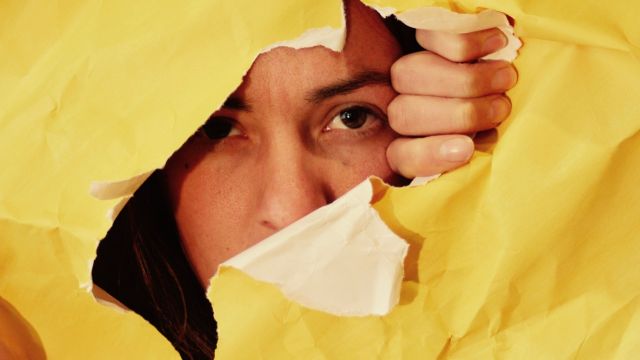The Yellow Wallpaper
A married woman, post partum, is confined to an upstairs room with yellow wallpaper. Oh, she’s permitted to take brief strolls for some fresh air; it is her psychic being, her thoughts and feelings that are locked in. She is ‘depressed’ (today we might call her condition ‘post-natal depression’), but her emotions are belittled, condescended to, and presented back to her transformed into ‘comforting’ and benign clichés. She is delicate, she must take care, she must refrain from too much thinking, she must be separated from her baby as he seems only to distress her… In other words, her reality is denied and it seems impossible for her to assert it against male certainty.
So, she slips into her own reality. She becomes obsessed by the yellow wallpaper: she sees another woman, trapped in the pattern in the wallpaper’pattern, struggling to break out. Only our woman can see her. Only our woman can free her… The metaphor is stark. Of course, we never see this yellow wallpaper, but our imaginations, like that of the woman, are the more powerful for that. If we could see the wallpaper, we would know there is no trapped woman.
The way director Laurence Strangio and performer Annie Thorold bring this to life is inventive and ingenious and yet, in its indirect representations, both more moving and blackly funny than any mere monologue. Ms Thorold, in late 19th century costume, is alone on stage. The bulk of the text is pre-recorded: we hear a voice from speakers that is cool, calm and matter of fact. The text is in the first person but past tense. This device adds an ironic and often witty distance to the account, but as the woman is more and more in the grip of her determined delusion, the effect is both eerie and terribly sad.
At times Ms Thorold speaks briefly in sync with the recorded narrator. Very occasionally, she speaks directly to the audience. (Perhaps this happens too soon?) As the account – of the woman’s condition, of her husband John’s response and that of another woman, Jenny – continues, Ms Thorold moves fluidly about a stage that is completely bare except for a table. Her lithe body, her expressive face and her large eyes make her character’s predicament all the more disturbing. Her movements suggest at one moment a resigned exhaustion, the next a repressed but visible rage, and the next a restlessness verging on panic. We imagine husband John – a well set-up, confident, solicitous and always smiling fellow – and we come to hate him.
The changes in time and mood are more than ably represented by Georgia Rann’s excellent lighting: her transitions are in keeping with Ms Thorold’s movements – fluid, subtle, never abrupt and redolent with meaning.
As the piece proceeds, Ms Thorold removes her skirt and blouse, then later her stays, until she is in only a full-length chemise. Now unconstrained, she is full of manic energy, almost happy while at the same time, ironically, fully committed to freeing the woman in the wallpaper.
The remarkable basis for this intriguing adaptation and interpretation is an autobiographical text by Charlotte Gilman Perkins written in 1890. There doesn’t seem to be much reason to update it too much it as it is sadly accurate (or if you like, ‘relevant’) today – perhaps even more so with the phenomenon known as ‘mansplaining’ and the revelations (to men, anyway) of one instance after another of the reality of gender power relations. The Yellow Wallpaper is a brief but impactful piece. Mr Strangio says it is still in development, but a test run with an audience is the rationale of La Mama’s Explorations season. Let’s hope The Yellow Wallpaper reappears.
Michael Brindley
Subscribe to our E-Newsletter, buy our latest print edition or find a Performing Arts book at Book Nook.

